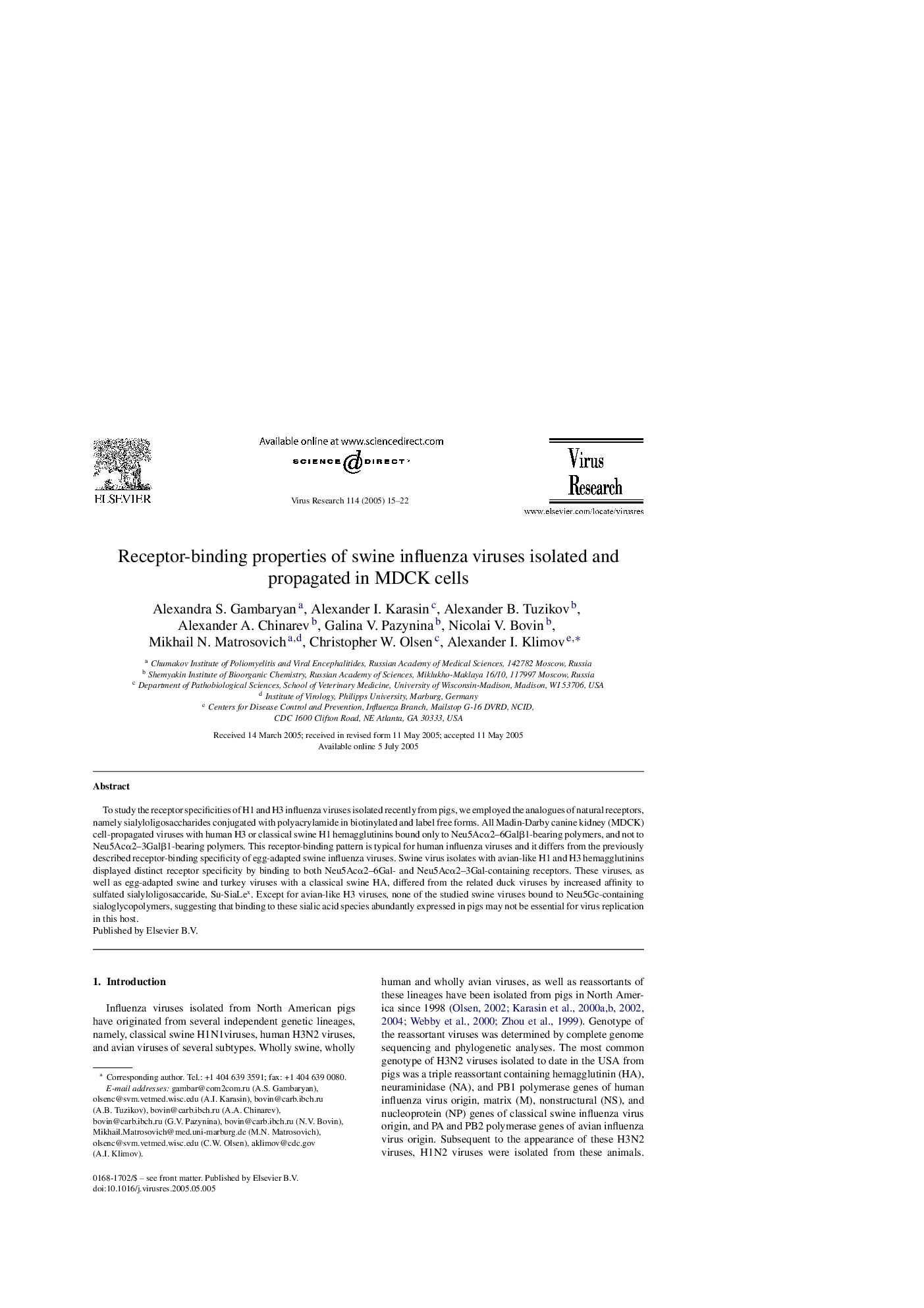| Article ID | Journal | Published Year | Pages | File Type |
|---|---|---|---|---|
| 9289298 | Virus Research | 2005 | 8 Pages |
Abstract
To study the receptor specificities of H1 and H3 influenza viruses isolated recently from pigs, we employed the analogues of natural receptors, namely sialyloligosaccharides conjugated with polyacrylamide in biotinylated and label free forms. All Madin-Darby canine kidney (MDCK) cell-propagated viruses with human H3 or classical swine H1 hemagglutinins bound only to Neu5Acα2-6Galβ1-bearing polymers, and not to Neu5Acα2-3Galβ1-bearing polymers. This receptor-binding pattern is typical for human influenza viruses and it differs from the previously described receptor-binding specificity of egg-adapted swine influenza viruses. Swine virus isolates with avian-like H1 and H3 hemagglutinins displayed distinct receptor specificity by binding to both Neu5Acα2-6Gal- and Neu5Acα2-3Gal-containing receptors. These viruses, as well as egg-adapted swine and turkey viruses with a classical swine HA, differed from the related duck viruses by increased affinity to sulfated sialyloligosaccaride, Su-SiaLex. Except for avian-like H3 viruses, none of the studied swine viruses bound to Neu5Gc-containing sialoglycopolymers, suggesting that binding to these sialic acid species abundantly expressed in pigs may not be essential for virus replication in this host.
Related Topics
Life Sciences
Immunology and Microbiology
Virology
Authors
Alexandra S. Gambaryan, Alexander I. Karasin, Alexander B. Tuzikov, Alexander A. Chinarev, Galina V. Pazynina, Nicolai V. Bovin, Mikhail N. Matrosovich, Christopher W. Olsen, Alexander I. Klimov,
